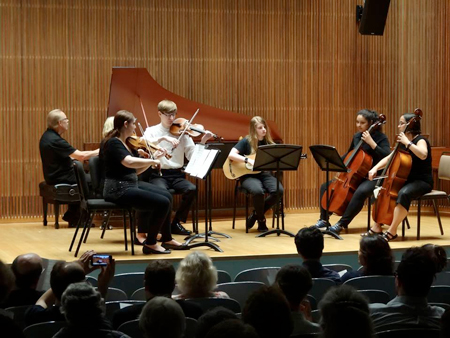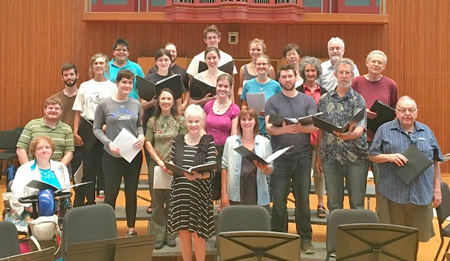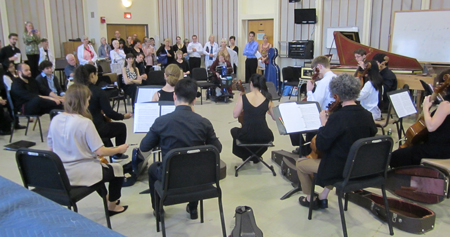by Daniel Hathaway

The last day of Oberlin’s Baroque Performance Institute was devoted almost entirely to preparations for the final participant concert, which would begin at 1:30 pm in Warner Concert Hall with performances by the Student Orchestra and Choir and the Intermediate and Beginner Dance Classes.
Before that, most of the 16 ensembles who would play on the second part of the event in Kulas Hall got a 15-minute dress rehearsal — really more of a sound check — onstage. That necessitated a number of furniture moves by the agreeable and accommodating stage crew, and not in the same order as the concert itself.
In the case of my ensemble, the only one that required two harpsichords, instrument No. 2 wouldn’t be available until the performance. That was fine for the Handel Passacaille (only one keyboard involved, as pictured below), but for the Mouret Suite de Symphonies — Prémière Suite, I shook hands with my instrument for the first time at the concert.



Then the marathon session began in Kulas, continuing nearly until 6:00 pm, with two intermissions (during the first, the audience was invited to come next door to Central 25 to hear the beginning viol class in two selections).

More mainstream but no less colorful were pieces like François Couperin’s La Sultanne. And it was fun to hear two Handel Italian duets the composer found useful for recycling when he was writing Messiah.
A steady parade of musicians moved between Kulas and Central Room 25 as audience members became performers, then returned to the audience again. Absent a musical track, perhaps the story is best told through a photo collage:

Tomorrow I’ll wrap up this chronicle with some final reflections on the experience of being embedded in BPI for two weeks as a harpsichord student.
Published on ClevelandClassical.com July 7, 2017.
Click here for a printable copy of this article



